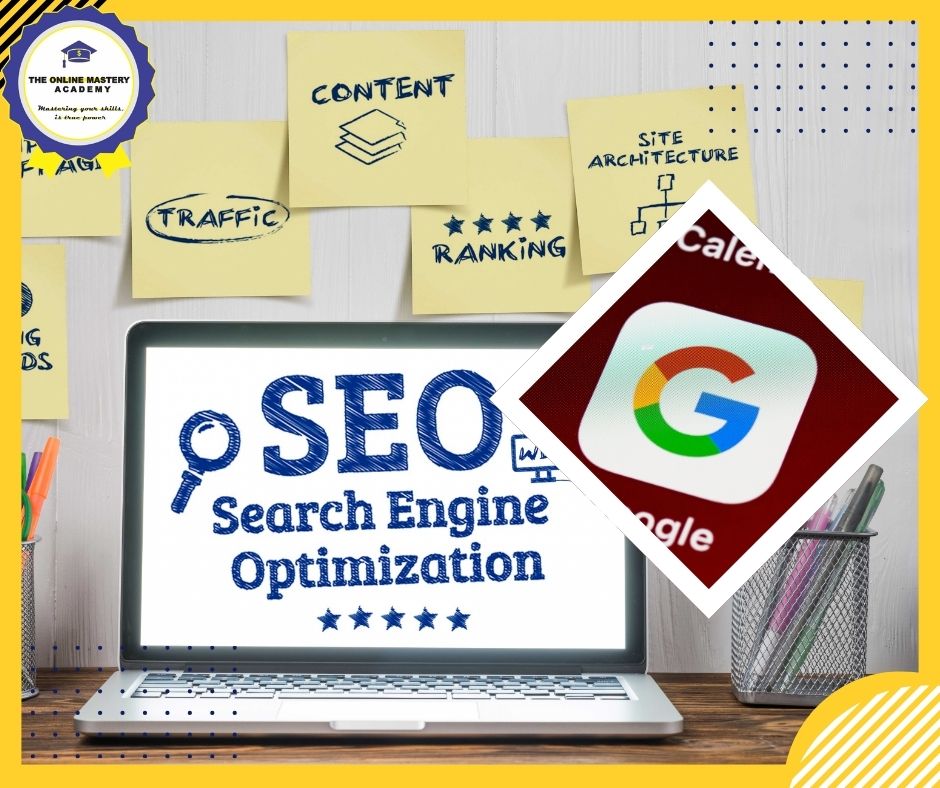Anybody who have ever own a website or blog and hope to be found on the Google Search Engine results page, should learn how Google Search Engine Works! Hence, this is a step by step guide on how to get your content found on Google Search Engine through a process called Search Engine Optimization, so, what exactly is search engine optimization ?
Search engine optimization (SEO) is the comprehensive process that helps your website rank higher in search engine results, driving traffic through unpaid, editorial, natural, or organic search results. This article will detail how SEO works and why it’s crucial for your online success.
What is SEO?
When you enter a search term into Google, the search engine decides which websites to display. SEO ensures your website appears in the top search results for relevant terms, driving organic traffic to your business. Most users only scroll through the first five results, making it vital to rank high. If you’re not using Pay-Per-Click (PPC) advertising to appear in sponsored results, SEO is your best option to reach the first page.
How SEO Works
SEO is designed to increase your website’s visibility on search engine results pages (SERPs). The higher your website ranks, the more likely users are to visit it. Here’s a quick overview of effective SEO strategies:
- Keyword Research: Identify high-traffic keywords relevant to your business.
- Content Creation: Produce high-quality, valuable content optimized for both users and search engines.
- Link Building: Obtain relevant links from reputable websites.
- Performance Tracking: Regularly assess your SEO results and adjust your strategy as needed.
Benefits of SEO
SEO is a critical marketing strategy because it drives traffic to your website. For example, the top result for a typical search query receives 40-60% of the traffic, while the second and third results receive significantly less. Only 2-3% of searchers click beyond the first page, making high rankings essential.
Even a small improvement in search rankings can lead to increased traffic and potential business opportunities. As a result, many companies invest heavily in SEO to outperform competitors.
Essential SEO Tools
SEO relies on various tools to optimize websites. Here are some of the most commonly used, both free and paid:
- Google Search Console: A free tool from Google that helps identify and fix technical issues on your site, offering reports on keyword rankings and traffic.
- Google Ads Keyword Planner: A free resource for keyword research, providing keyword ideas and search volume data.
- Backlink Analysis Tools: Tools like Ahrefs and SEMrush help identify link-building opportunities by analyzing which sites link to yours and your competitors’.
- Comprehensive SEO Tools: Moz, Ahrefs, SEMrush, Searchmetrics ( now called Conductor ), and Linkdex offer features for keyword research, tracking rankings, and identifying SEO opportunities.
- Social Media Platforms: While social media doesn’t directly impact SEO, it can help with networking and building relationships that lead to link-building opportunities.
Paid vs. Organic Search: Key Differences
Understanding the differences between paid search (PPC) and organic search (SEO) is crucial:
- Position: Paid results appear at the top of the SERPs, while organic results are listed below.
- Time: Paid search results are immediate, while organic search results take time to achieve.
- Payment: Paid search involves costs per click (CPC), while organic traffic is free, though it requires time and effort.
- ROI: Paid search provides immediate ROI data, but it may decrease over time. Organic search ROI improves over time, offering long-term benefits.
- Traffic Share: Organic results receive 70-80% of clicks, while paid results get 20-30%.
How Search Engines Rank Websites
To rank websites, search engines like Google and Bing use various factors:
- Crawling: Search engines use crawlers to discover new and updated content on the web.
- Indexing: Once content is discovered, it’s indexed to be displayed in search results.
- Ranking: Finally, search engines rank the indexed content based on over 200 factors, including technical, on-page, and off-page optimization.
Optimizing for RankBrain
Google’s RankBrain uses machine learning to understand search queries and deliver the most relevant results. To optimize for RankBrain:
- Optimize for medium-tail keywords (two to three words).
- Create clickable titles and descriptions to improve click-through rates (CTR).
- Enhance dwell time by providing engaging content that keeps visitors on your page.
Conversion Rate Optimization (CRO)
SEO can drive significant traffic, but it’s essential to convert this traffic into customers. Conversion Rate Optimization (CRO) involves A/B testing and other techniques to improve the user experience and increase conversions. Tools like Optimizely make this process simpler.
Setting SEO Goals
Setting clear SEO goals aligned with your business objectives is crucial. These goals should include metrics like:
- Keywords: Target high-traffic, relevant keywords.
- Traffic: Aim to increase organic traffic.
- Market Share: Boost your share of voice in search results.
- Brand Awareness: Increase visibility and recognition.
- Lead Generation: Generate more qualified leads.
- Reputation: Improve your online reputation.
- E-commerce: Drive more sales through search traffic.
Content Marketing for SEO
Content is essential for attracting search engines and engaging website visitors. High-quality, relevant content improves your site’s rankings and keeps users on your pages longer, increasing the likelihood of conversions. Consider creating a variety of content types, such as:
- Infographics
- Tutorials and guides
- Social media content
- Blog posts and articles
- Whitepapers and eBooks
- Audio and video content
Factors Affecting SEO
Several factors impact your SEO positioning, including:
- Technical SEO: Optimizing the backend of your site to improve its performance in search engines.
- On-Page SEO: Ensuring your content and HTML elements are optimized for search engines.
- Off-Page SEO: Building trust and authority through backlinks and social signals.
Black Hat vs. White Hat SEO
Black Hat SEO uses unethical tactics to quickly rank content, while White Hat SEO follows best practices to achieve long-term success.
By focusing on White Hat SEO strategies, you can build a sustainable online presence that attracts and retains customers.
Conclusion
SEO is a powerful tool for improving your website’s visibility and driving traffic. By understanding and implementing SEO best practices, you can achieve higher rankings, attract more visitors, and ultimately grow your business.




